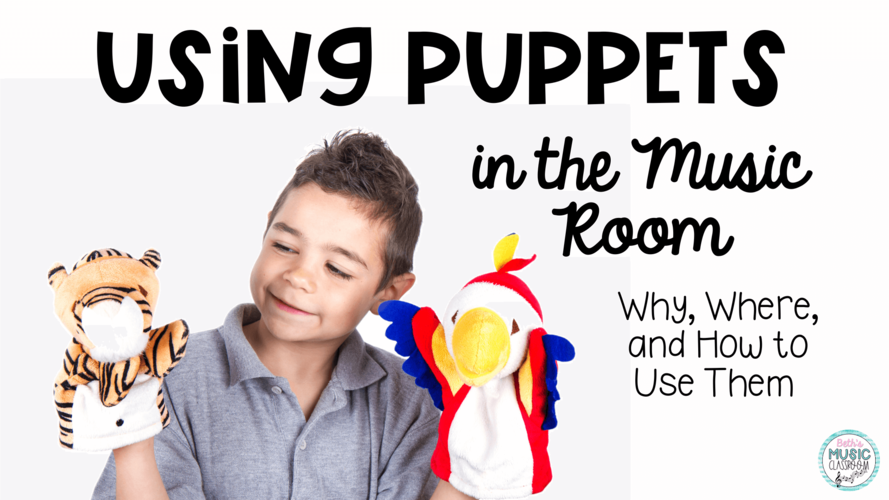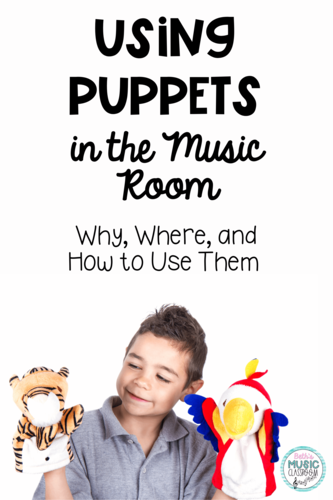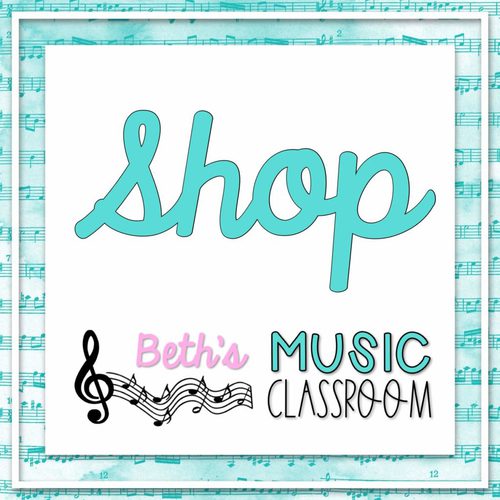Using Puppets in the Music Classroom

Using Puppets in the Classroom
Recently, I’ve had a problem – a puppet problem. Ok, so I haven’t had to go to puppet therapy or anything, but it’s real. I just love using puppets in my classroom, and my students love them too! I have bought so many puppets lately that I feel like I’m a zookeeper some days! Have you hopped on the puppet train yet? If not, I want to share with you why I have and how I actually use my puppets in the music classroom.
Benefits of Using Puppets
I want to first talk about the benefits of using puppets with young students. Especially with my new kindergarteners, puppets can be a great way to get their attention and feel free to open up to this new environment. I love using a puppet the first day I meet my students because it helps them loosen up and feel comfortable to share their thoughts and speak in a group. I’ve found some kids to not talk to an adult, but they would to a puppet.
Puppets also help students use their imaginations and creative thinking – for example a story, scenario, conversation, etc. They can even be used as a role model for positive behavior or a singing prop for echoing, motions, etc.
Finding Puppets
Check everywhere! I am constantly on the lookout for new puppets for my collection (like I said, I have a problem!). Check Amazon, IKEA, and music companies. Additionally, see if you can add one into your school budget each year. In a few years, your collection will have grown significantly. Look on Facebook groups for gently used puppets. Also, check your local consignment and thrift stores. (I recently found a Folkmanis sheep puppet for 75 cents!)
Interested in adding some puppets to your collection, shop Folkmanis puppets by clicking here, or shop my Amazon store for music teachers here (some of these are affiliate links – but it won’t change your price – no pressure).
Using Puppets
Sometimes I purchase a puppet for a specific song, and other times, I look for a song to match the puppet I already bought.
For example, I just love the folk song and the Feierabend book “Jennie Jenkins.” I was able to put into my budget the matching bird puppet set from West Music! It was a great purchase because I not only was able to use the 6 puppets for “Jennie Jenkins,” but I also used the bluebird for “Here Comes a Bluebird,” the cardinal for “Mary Wore Her Red Dress,” and more. Think about that with your puppet collection and bonus points for you if you purchase a puppet that has multiple songs or activities.
Here’s a few tips for actually using puppets in front of your class. Give them a catchy, relatable name, and don’t forget it – because your students will remind you! Be sure to move their mouth when they are “talking” to make it more realistic.
Introduce your puppet as a puppet. At the same time, give each a unique personality and voice. Face the puppet to your students, keeping the puppet’s eyes on the group.
For more tips, check out this amazing video by Folkmanis:
Planning for Puppets
Determine and plan for your puppets’ purpose.
- Is the puppet mainly to get students excited and get their attention?
- Does the puppet have a certain emotion or style of music that it could demonstrate?
- Could the puppet be used to help teach a musical concept?
- Does the puppet match a story or book?
Plan out puppets with various musical theory concepts throughout the year.
- Tempo
- Dynamics
- Pitch
- 4 Voices
- Articulation
- Movement
- Musical Stories – The Carnival of the Animals, Peter and the Wolf, Nutcracker, Peer Gynt, In the Hall of the Mountain King
Let’s talk about some specific examples. I have a rabbit and turtle puppet that I use to introduce tempo to kindergarten learning fast and slow. We do a pretend race, a movement break, and I make the puppets look like they’re moving and running on top of a music stand. See what units you teach to your elementary students that need a puppet.
In the fall, I teach the song “Hop Old Squirrel,” and you got it – I use a squirrel puppet. After learning the melody, students add other motions that the squirrel could do – stomp, clap, run, etc. So we change the text and the motions. I do my best to make the puppet demonstrate the motions for students.
I hope that you are able to take away some ideas for using puppets in the music classroom. If you have any favorite puppets, please share them with me! I’d love to hear how you use them with your students. You can find me on Instagram (@bethsmusicclassroom) or email me at beth@bethsmusicclassroom.com.
If you’re looking for some other ways to inspire creativity and get students’ attention, definitely check out this post on parachute music activities!


